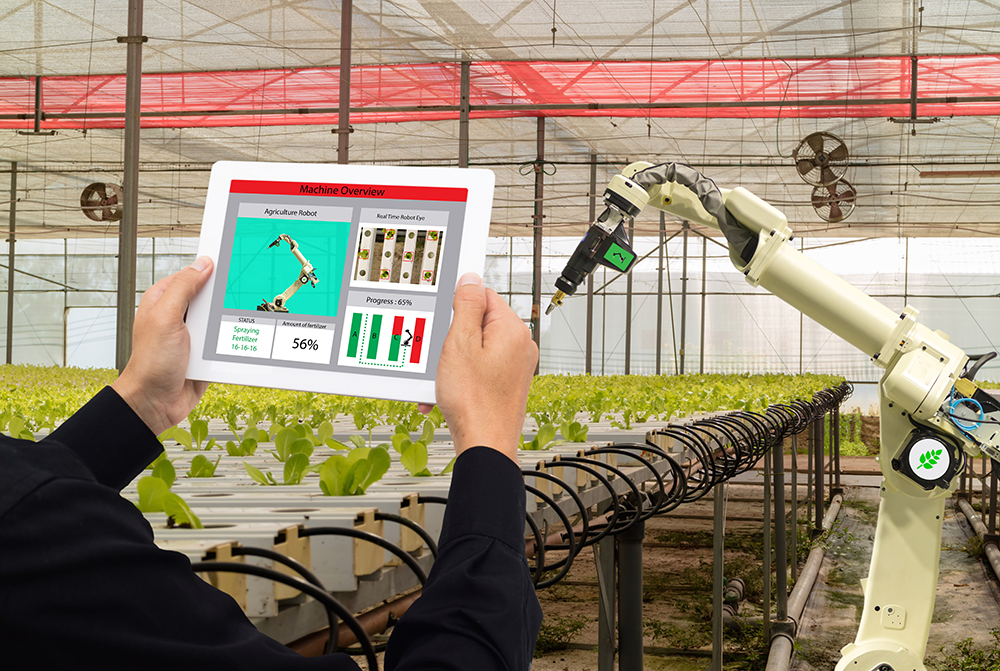
These technologies pertain to the automation of farm labor, such as land preparation, weeding, planting, watering, wet or dry fertilizing, trimming, harvesting and picking, and plant removal / plowing. The technologies, originally envisioned by MCE123 in 2010, would be able to perform over 90% of the labor required to farmland, including through autonomous robotics programs controlled by farming robotics companies, to support the aging population of farmers in The United States of America. It would use precise sensor networks, such as GPS or GLONASS navigation, depth sensors, humidity sensors, computer vision, advanced algorithms including neural networks, and other types of sensors to determine the most productive ways to farmland – which could be determined with Artificial Intelligence that drives the robotics systems specific to the requirements of specific sets of land. These systems could be connected to Artificial Telepathy systems, to allow all equipment to be operated and managed and monitored remotely through software engineers' and systems operators' brains, through The Satellite Technology. The systems would be able to queue up operations, such as land preparation including plowing, weeding or pesticide application, planting, watering, wet or dry fertilizing, trimming, harvesting and picking, or even plant removal, and automatically move the necessary and required vehicles from on-site or remote storage sheds into position to operate or receive the harvest and then transport the produce or fruit to a local packaging company or agricultural cleaning or shelling company, and the vehicles would be able to automatically drive themselves to the drop off location(s). The systems would be able to determine which product should be picked and/or harvested to get the best possible product at the perfect timing, and the machinery could pick or harvest the crop over time, only picking or harvesting what is fresh or proper to be picked or collected at that time, for applicable crops and yield sizes, and also deliver crops with autonomous vehicles to agricultural crop processing plants. The systems would be able to spray pesticides automatically, with sensor systems that detect the presence of humans or other obstructions to know when to not spray or operate otherwise, whatever the machinery does usually. Crop dusting autonomous flight drones could spray pesticides or herbicides to ensure that crops are healthy from pests and diseases, from up in the air. The systems would be able to prepare land for growing crops and keep the land in good shape in between harvests by keeping weeds and other non-needed plants under control. All of these robotics essentially did not exist when Patrick R. McElhiney developed the idea of these technologies in his Intellectual Property Law degree at UNH Law School, previously Franklin Pierce Law Center. If it were not for attending this school program, he likely would have never documented all of these inventions hosted on his company website, that have still yet to be paid for.

















